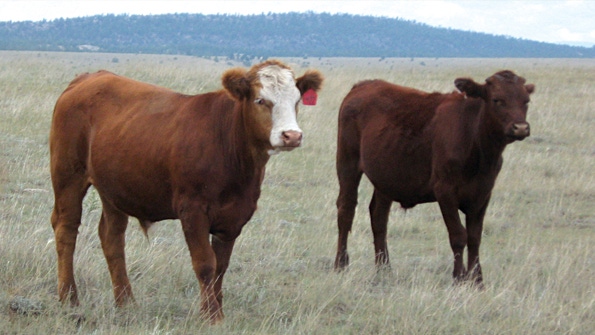It’s important to offer diets and supplements that are nutrient dense and palatable during the weaning period to minimize nutritional stress on the calf.
October 10, 2016

Sponsored Content
Weaning stress is a combination of nutritional and social changes forced upon the calf. Managing weaning stress is a major factor that determines when many producers market their calf crop. Avoiding the risk of health problems at weaning is one reason some producers choose to wean on the trailer as the calves go to the sale barn, but with the right nutritional solutions you can minimize the effects of nutritional stress and improve calf performance.
Top 3 reasons to manage weaning and market heavier calves:
The feedlot buyer wants heavier calves. Average placement weight in feedlots have averaged over 740 pounds for most of 2015 and 2016. Animals over 800 pounds are the highest percentage of animal placed in the feedlot.
Add revenue by selling more pounds.
Improve selling price as calf prices during the fall are typically the lowest of the year.
Minimizing nutritional stress
Trace minerals, copper, zinc and selenium are critical for immune function. For the most part, the calf’s diet has been milk and grass which are not very good sources of trace minerals. The liver is the main storage organ for many trace minerals and the calf has relied heavily on these liver reserves of copper, zinc and selenium for both growth and immune function. The problem is that weaning occurs when the calf is at a dangerously low trace mineral status.
Therefore, it is very important to offer diets and supplements that are nutrient dense and palatable during the weaning period to minimize nutritional stress on the calf. Self-fed supplements can help reduce the social and nutritional stress at weaning which will allow for pre-conditioning and selling healthier calves at a later date and at a heavier weight.
Minimizing social stress
Abrupt removal of milk is stressful and removal of the mother at the same time multiplies the stress load for calves. Fence line weaning and the use of weaning nose rings are ways to remove milk without the added stress of the missing mother while calves learn a new environment.
Offering self-fed supplements for a few days to a week prior to weaning will help ease the social stress by having another familiar item in the weaning pen. Once calves learn what the self-fed supplement provides, they will seek it out. Use this natural attraction to the supplement to help calves find and learn where water tanks and fountains are located.
Lowering risk and improving performance
A successful weaning phase and transition to the next production phase is all about getting calves on feed as fast as possible. The use of self-fed supplements has consistently been shown to improve feed intake and reduce the morbidity and mortality rate of calves at weaning and receiving. Part of this response is due to the concentrated mineral and vitamin delivery. The improvement in feed intake is one of the largest benefits in addition to improved health status. All cattle producers know that if calves are eating well, they rarely get sick.
Visit www.crystalyx.com for more information on how CRYSTALYX® self-fed stress supplements help calves overcome nutritional stress at during the weaning period.
You might also like:
15 favorites from fall photos on the ranch
4 questions to ask before marketing 2016 calves
9 new pickups for the ranch in 2016
Seven keys to ranch profitability
How to cull the right cow without keeping records
Burke Teichert's top 5 tips on bull selection
Young ranchers, listen up: 8 tips from an old-timer on how to succeed in ranching
You May Also Like



